1-Day Family Sightseeing Adventure in Busan, South Korea
Busan, South Korea
1 days
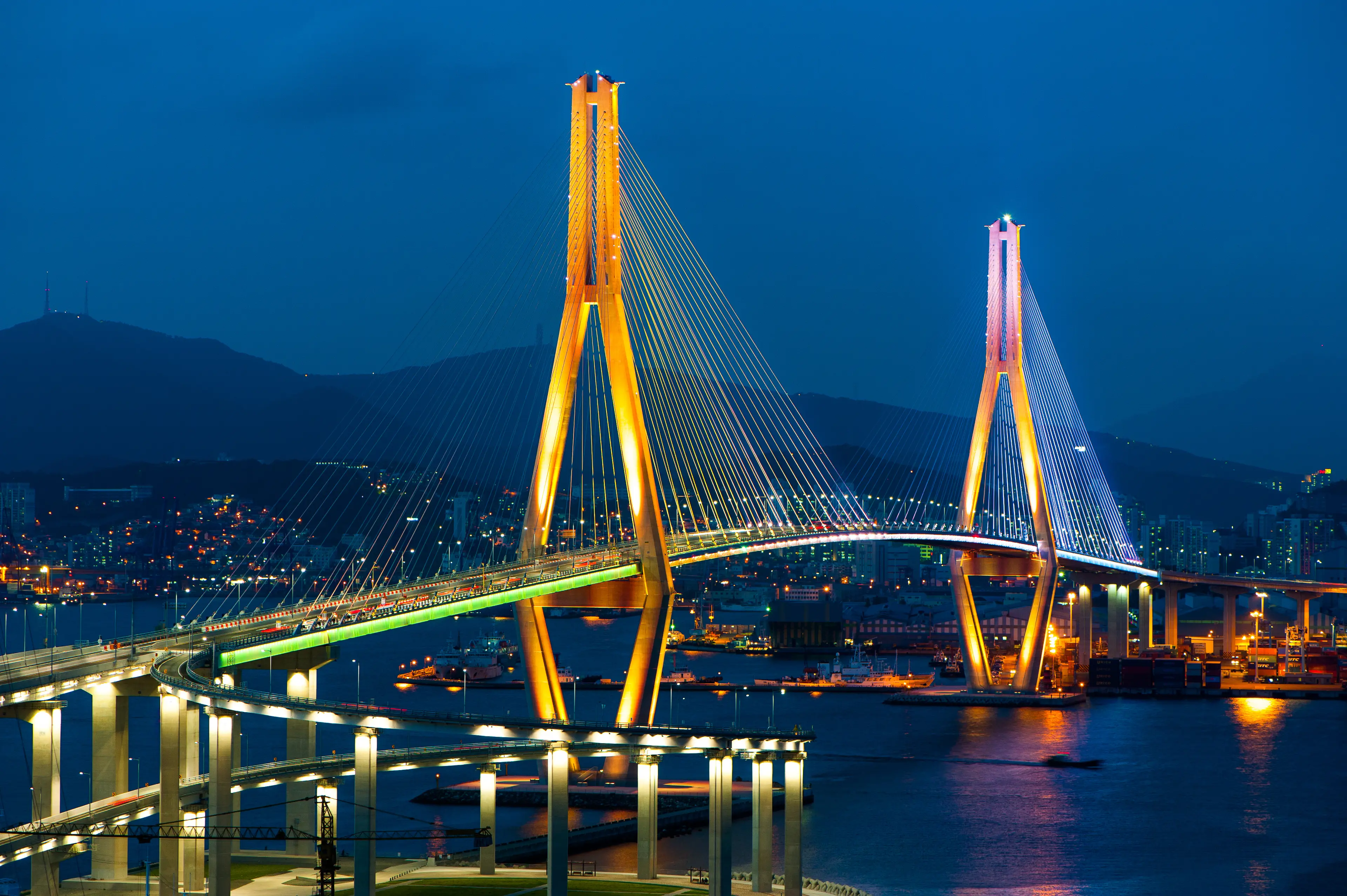
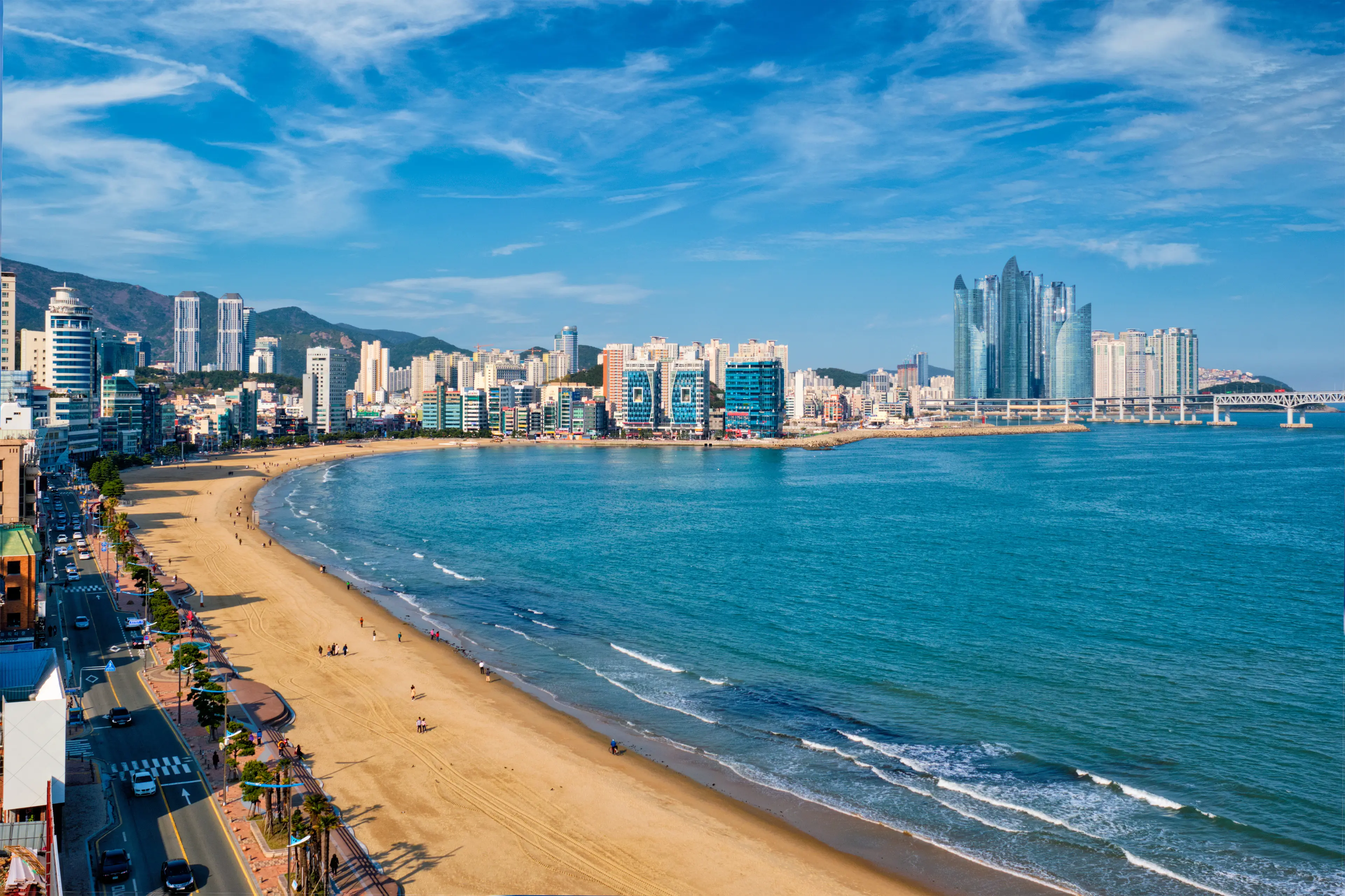


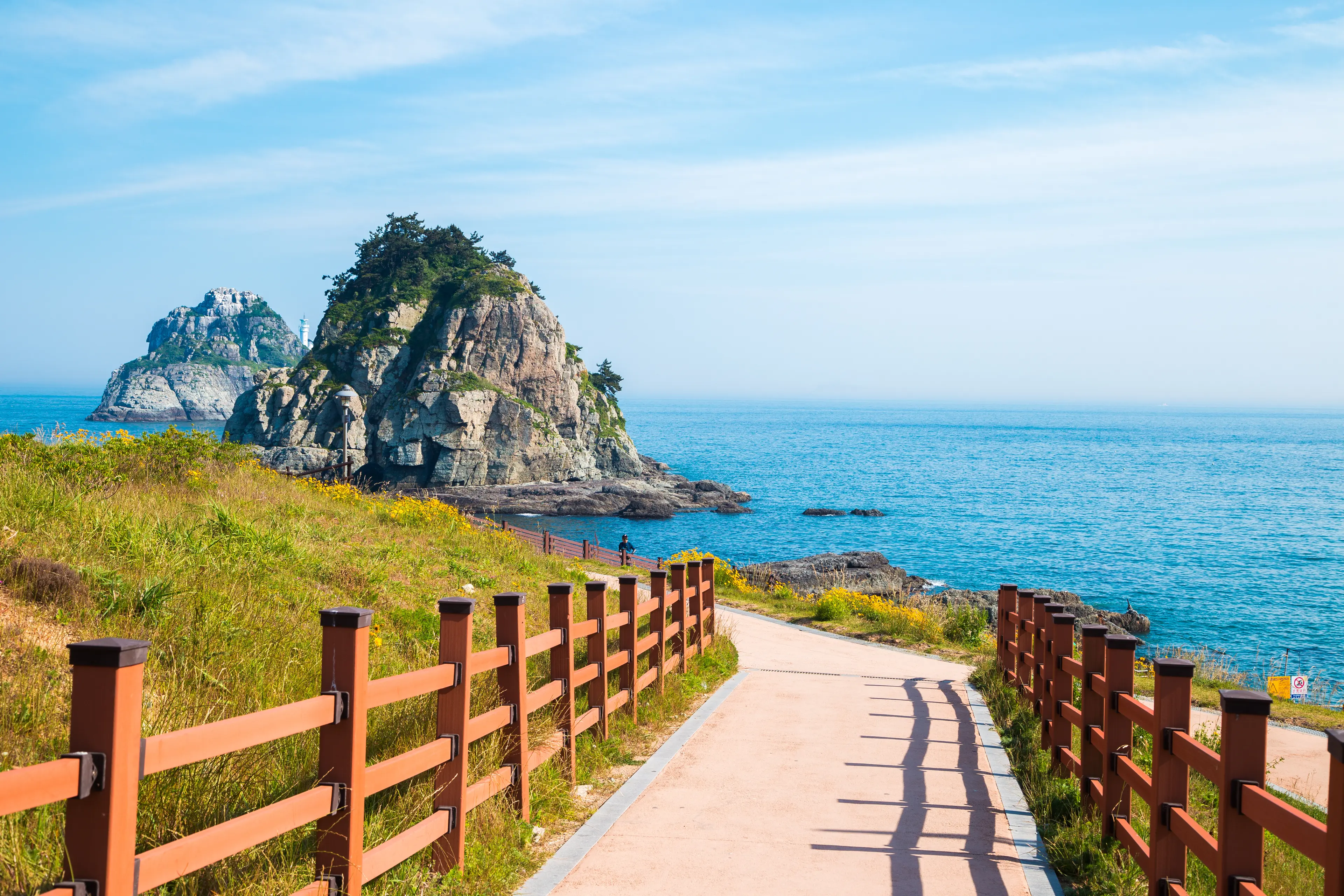
About Busan, South Korea
Discover the vibrant city of Busan, South Korea's second-largest metropolis. Known for its stunning beaches, majestic mountains, and bustling markets, Busan offers a unique blend of natural beauty and urban charm. Visit the famous Haeundae Beach, explore the colorful Gamcheon Culture Village, or indulge in fresh seafood at Jagalchi Market. Don't miss the panoramic city views from Busan Tower or the tranquil beauty of Haedong Yonggungsa Temple, perched on a cliff overlooking the sea. With its rich history, dynamic nightlife, and delicious local cuisine, Busan promises an unforgettable travel experience. Whether you're a nature lover, foodie, or culture enthusiast, Busan has something for everyone.
1-Day Itinerary
Attractions in Itinerary (7)
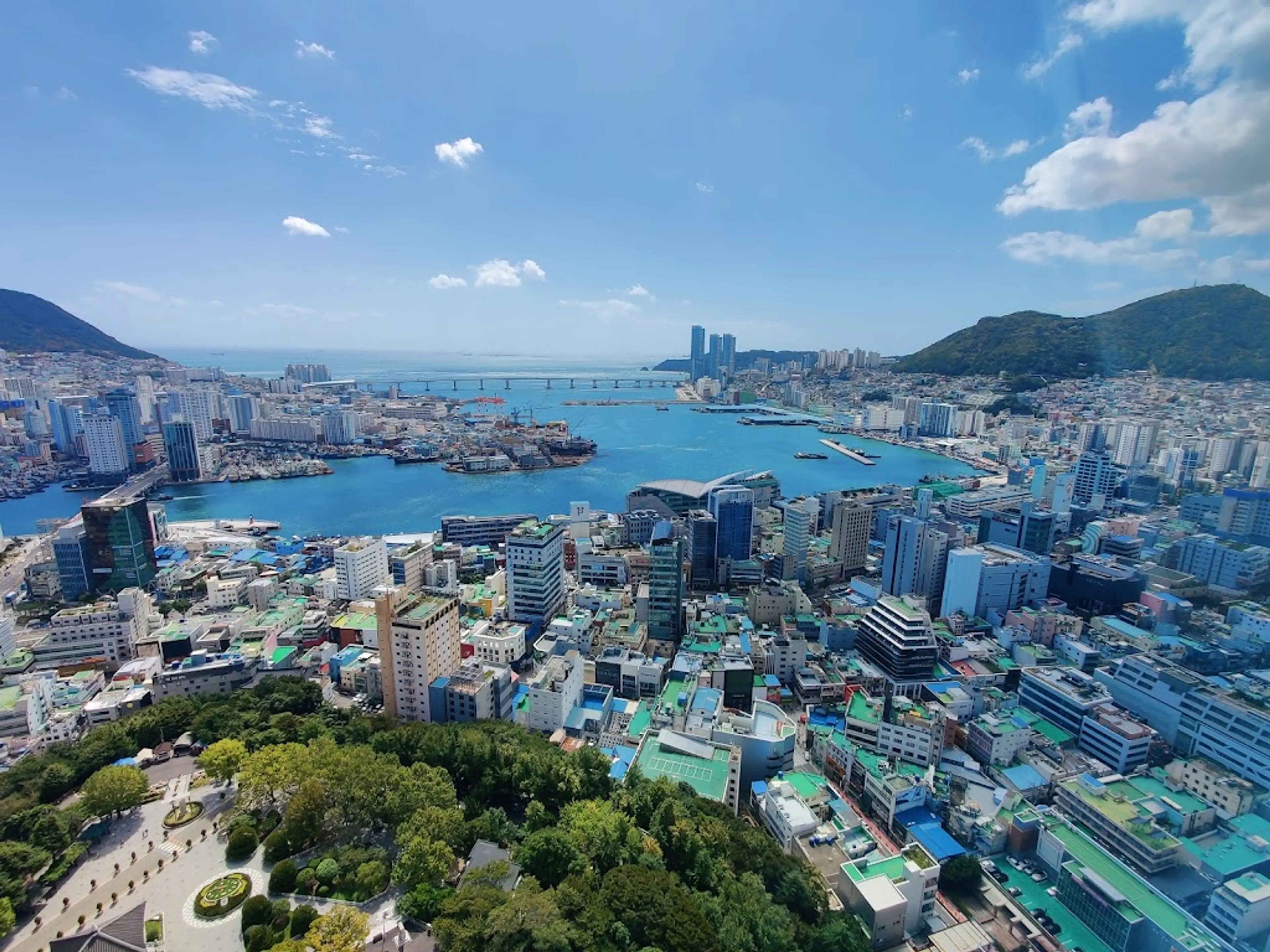
1Busan Tower
A 120-meter high tower located in Yongdusan Park, offering panoramic views of the city.
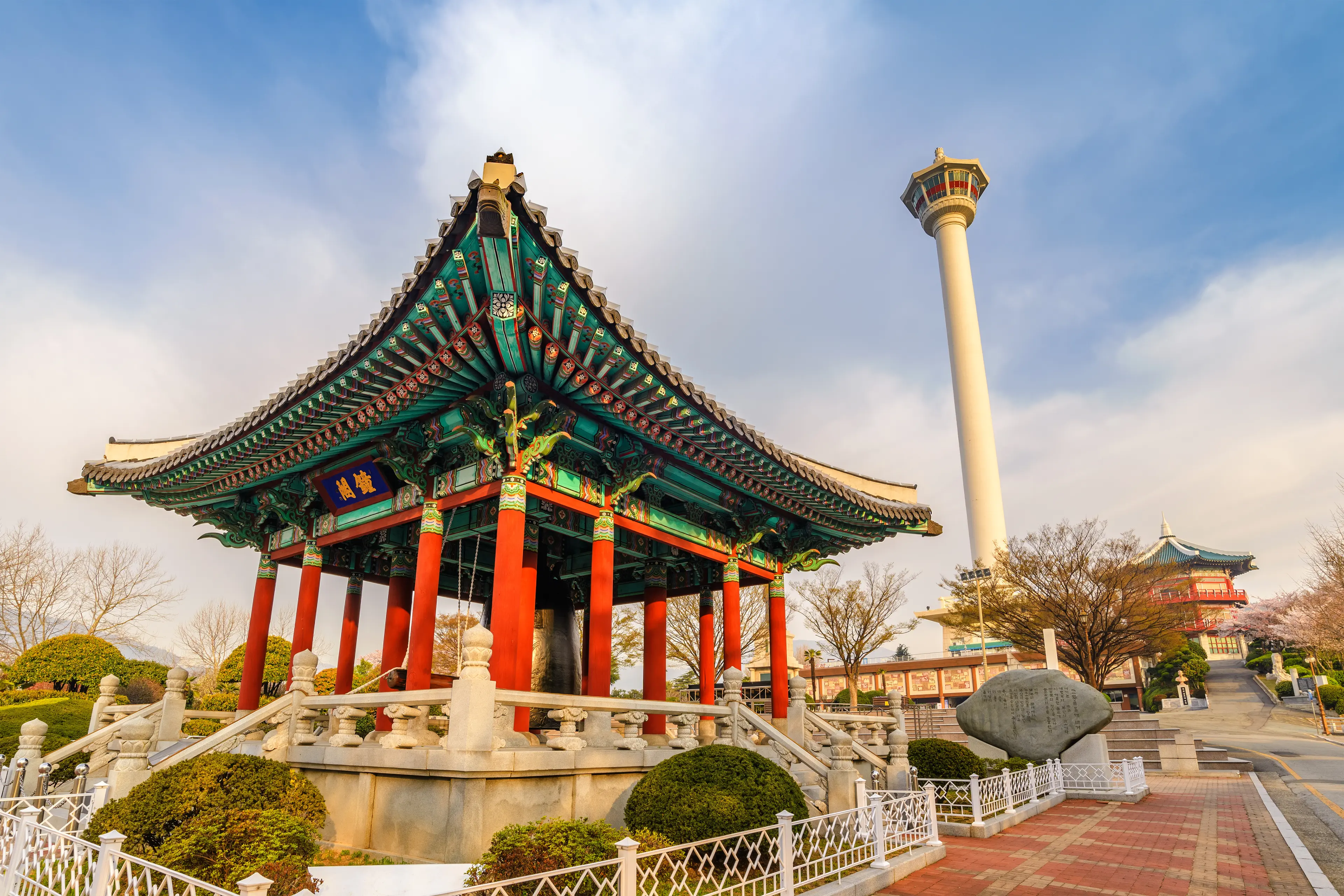
2Yongdusan Park
A hilltop park that houses Busan Tower and several monuments, including a statue of Admiral Yi Sun-sin.

3Statue of Admiral Yi Sun-sin
This statue is a tribute to Admiral Yi Sun-sin, a naval commander famed for his victories against the Japanese navy during the Imjin war in the Joseon Dynasty.
4Busan Museum of Bells
The Busan Museum of Bells houses a collection of bells from around the world, showcasing the different cultures and histories associated with each bell.

5Gamcheon Culture Village
A colorful and artistic village located on the hills of Busan, known for its brightly painted houses and murals.

6Gwangalli Beach
A beautiful beach known for its fine sand, located in a city area.

7Gwangan Bridge
Gwangan Bridge, also known as Diamond Bridge, is a suspension bridge located in Busan. It's a famous landmark of the city and offers a stunning view, especially at night when it's illuminated with colorful lights.
Local Food and Drinks (12)

Samgyeopsal
Samgyeopsal is a popular Korean barbecue dish that is commonly enjoyed in Busan. It consists of thick, fatty slices of pork belly meat that are grilled on your table before being dipped in a spicy sauce and wrapped in lettuce leaves.

Dwaeji Gukbap
Dwaeji Gukbap is a hearty pork soup that is a specialty of Busan. The soup is made by boiling pork bones for a long time to extract their flavor, and is served with rice and various side dishes.

Haemul Pajeon
Haemul Pajeon is a savory pancake that is popular in Busan. It is made with a batter of eggs and wheat flour, and is filled with a variety of seafood such as shrimp, squid, and green onions.

Sannakji
Sannakji is a dish made from live octopus that is a must-try for adventurous eaters visiting Busan. The octopus is cut into small pieces and served immediately, often still moving on the plate.

Bibimbap
Bibimbap is a traditional Korean dish that is popular in Busan. It is a bowl of warm white rice topped with namul (sautéed and seasoned vegetables) and gochujang (chili pepper paste), soy sauce, or doenjang (a fermented soybean paste). A raw or fried egg and sliced meat (usually beef) are common additions.

Fresh Seafood
Jagalchi Fish Market in Busan is famous for its fresh seafood. Visitors can choose from a wide variety of seafood and have it cooked on the spot in the market's many food stalls.

Hotteok
Hotteok is a popular street food in Busan. It is a sweet pancake filled with a mixture of brown sugar, honey, chopped peanuts, and cinnamon.

Chimaek
Chimaek, a combination of the words 'chicken' and 'maekju' (beer), is a popular pairing in Busan. It typically involves eating fried chicken while drinking beer.

Soju
Soju is a clear, colorless distilled beverage of Korean origin. It is usually consumed neat, and its alcohol content varies from about 16.8% to 53% alcohol by volume (ABV).

Makgeolli
Makgeolli is a Korean traditional alcoholic beverage. It is a rice wine made from the fermentation of rice and water. It is often enjoyed with pajeon (Korean pancake).

Bingsu
Bingsu is a popular Korean shaved ice dessert with sweet toppings that may include chopped fruit, condensed milk, fruit syrup, and red beans.

Eomuk
Eomuk is a processed seafood product that is a popular street food in Busan. It is often served on a skewer and boiled in a delicious broth.
Best time to visit
The best time to visit Busan, South Korea, is during the spring months of April to June and the autumn months of September to November. During these periods, the weather is mild and pleasant, perfect for sightseeing and outdoor activities. Spring offers the beautiful cherry blossom season, while autumn presents stunning fall foliage. Additionally, these periods avoid the hot, humid summers and the cold winters, providing the most comfortable climate for tourists.
How to get around
Subway
Busan has an extensive subway system with four lines that cover most of the city. It's a convenient and efficient way to get around, with English signage and announcements.
Bus
The city's bus network is also comprehensive, with local and express services that reach areas not covered by the subway. Buses are generally slower than the subway due to traffic, but they offer a more scenic ride.
Taxi
Taxis are plentiful and relatively affordable in Busan. They can be hailed on the street or booked through a smartphone app. Most taxi drivers don't speak English, so it's helpful to have your destination written in Korean.
Ridesharing
Uber is not available in Busan, but there's a local equivalent called Kakao T. This app works similarly to Uber, allowing you to book rides and pay with your credit card. However, the app is primarily in Korean.
Bike Rental
Busan has a public bike rental system called 'Bike Busan'. There are rental stations throughout the city, and you can rent a bike for a few hours or the whole day. It's a great way to explore the city's many bike paths and parks.
Car Rental
Renting a car can be a good option if you're planning to explore the outskirts of Busan or other parts of the Gyeongsang province. However, driving in the city can be challenging due to heavy traffic and complex road systems.
Ferry
Ferries operate from Busan to several islands in the area, including Yeongdo and Geoje. It's a unique way to see the city and its surroundings from the water.
Foot
Many of Busan's attractions are located close together, especially in areas like Haeundae and Gwangalli. Walking can be a pleasant way to get around, particularly when the weather is nice.
Important information
Currency₩ KRW
Time zoneUTC+9
Driving sideRight
Emergency phoneAmbulance: 119; Fire: 119; Police: 112
Drinking waterYes, but some opt for bottled water
Power sockets
Voltage220 V
Things to know about Busan, South Korea as a first time visitor
1
Busan is South Korea's second-largest city, known for its beaches, mountains, and temples.
2
The official language is Korean, but English is also widely spoken, especially in tourist areas.
3
The local currency is the South Korean Won (KRW). Credit cards are widely accepted, but it's also good to have some cash on hand for small vendors.
4
Busan has a humid subtropical climate. Summers (June to August) are typically hot and humid with temperatures ranging from 68°F to 86°F (20°C to 30°C). Winters (December to February) are cold with temperatures ranging from 28°F to 46°F (-2°C to 8°C).
5
Tipping is not customary in South Korea. In some cases, it may even be seen as insulting.
6
Public transportation in Busan is very efficient. The Busan Metro is a great way to get around the city. Taxis are also readily available and reasonably priced.
7
South Korea uses the type C and F plug outlets. The standard voltage is 220 V, and the standard frequency is 60 Hz.
8
Busan is generally safe for tourists, but like any major city, it's important to stay vigilant and aware of your surroundings.
9
South Koreans have a unique dining etiquette. For example, it's considered polite to wait for the eldest person at the table to start eating before you do.
10
South Korea has a strict anti-smoking law. Smoking in public areas, including restaurants and cafes, is prohibited.
11
Busan is known for its seafood. Be sure to try some local specialties like raw fish (sashimi) and spicy seafood soup (haemul-tang).
12
Drinking alcohol in public places is legal in South Korea. Soju, a local spirit, is a popular choice.
13
South Korea is 9 hours ahead of Greenwich Mean Time (GMT +9). It does not observe daylight saving time.
14
Busan has a high standard of healthcare. Pharmacies are widely available, and many doctors speak English.
15
It's considered polite to bow when greeting someone. The depth of the bow indicates the level of respect.
16
Internet access is widely available in Busan, including free Wi-Fi in many public areas.
17
Tap water is safe to drink in Busan, but most locals prefer to drink bottled water.
18
Busan has a vibrant nightlife with many bars, clubs, and restaurants open late into the night.
19
Public restrooms are widely available in Busan, but it's a good idea to carry toilet paper or tissues with you as they may not always be provided.
20
South Korea has strict laws against drug use. Even small amounts can lead to heavy fines and imprisonment.
Basic Korean to know as a first time visitor
English phrase | Native phrase | Pronunciation | When to use it |
|---|---|---|---|
Hello | 안녕하세요 | Annyeonghaseyo | Greeting someone |
Goodbye | 안녕히 가세요 | Annyeonghi gaseyo | Saying goodbye |
Thank you | 감사합니다 | Gamsahamnida | Expressing gratitude |
Please | 제발 | Jebal | Making a request |
Yes | 네 | Ne | Agreeing or confirming |
No | 아니요 | Aniyo | Disagreeing or denying |
Excuse me | 실례합니다 | Sillyehamnida | Getting attention or apologizing |
I'm sorry | 미안합니다 | Mianhamnida | Apologizing |
Do you speak English? | 영어를 할 수 있나요? | Yeong-eoreul hal su issnayo? | Asking if someone speaks English |
I don't understand | 이해하지 못하겠습니다 | Ihaehaji mothagesseumnida | When you don't understand what's being said |
Where is the bathroom? | 화장실이 어디에 있나요? | Hwajangsiri eodie issnayo? | Asking for directions to the bathroom |
How much does this cost? | 이것은 얼마입니까? | Igeoseun eolmaimnikka? | Asking the price of something |
I would like to order | 주문하고 싶습니다 | Jumunhago sipseumnida | Ordering food or drinks |
Help | 도와주세요 | Dowajuseyo | Asking for help |
Can I get the bill, please? | 계산서를 가져다 주시겠습니까? | Gyesanseoreul gajyeoda jusigessseubnikka? | Asking for the bill at a restaurant |
Water | 물 | Mul | Asking for water |
Beer | 맥주 | Maekju | Ordering a beer |
Cheers | 건배 | Geonbae | Making a toast |
Good morning | 좋은 아침 | Joeun achim | Greeting someone in the morning |
Good night | 안녕히 주무세요 | Annyeonghi jumuseyo | Saying goodnight |
Packing List
Clothing
Comfortable walking shoes
Lightweight clothing
Sweater or jacket (depending on the season)
Umbrella or raincoat (in case of unexpected rain)
Sunglasses
Hat or cap
Toiletries
Travel-sized toothpaste and toothbrush
Travel-sized shampoo and conditioner
Deodorant
Sunscreen
Hand sanitizer
Face masks
Personal hygiene items
Travel documents and essentials
Passport
Visa (if required)
Hotel reservation confirmation
Travel insurance documents
Emergency contact information
Local currency (South Korean Won)
Credit and debit cards
Map of Busan
Electronics and gadgets
Smartphone
Charger and adapter
Portable power bank
Headphones
Camera (if you don't want to use your phone camera)
Miscellaneous items
Snacks
Water bottle
Travel guide book
Phrasebook or language app (for basic Korean phrases)
Backpack or daypack
Travel pillow (for the journey)
First aid kit
Weather Conditions
Busan, South Korea, experiences a humid subtropical climate with four distinct seasons, which can greatly impact your travel plans. Spring (April to June) is a beautiful time to visit Busan, with temperatures ranging from 50°F to 75°F (10°C to 24°C). It's a great time for outdoor activities, but be prepared for occasional rain showers. Summer (July to September) in Busan is hot and humid, with temperatures often reaching up to 90°F (32°C). It's also the monsoon season, so expect heavy rains, especially in July and August. If you're visiting during this time, pack light clothing and a sturdy umbrella. Autumn (October to November) is arguably the best time to visit Busan. The weather is mild and dry, with temperatures ranging from 45°F to 70°F (7°C to 21°C). The fall foliage is also a beautiful sight to behold. Winter (December to March) in Busan is relatively mild compared to other parts of Korea, with temperatures ranging from 30°F to 45°F (-1°C to 7°C). Snowfall is rare but possible. If you're visiting during this time, be sure to pack warm clothing. Regardless of when you visit, it's always a good idea to check the local weather forecast before your trip to ensure you're adequately prepared. Also, remember that weather can be unpredictable, so it's always wise to pack a variety of clothing options. Lastly, due to its coastal location, Busan can be affected by typhoons during the late summer and early autumn. While these are usually not severe, they can disrupt travel plans, so it's something to be aware of if you're planning a visit during this time.
| Month | Hi / Lo (°C) | Weather Overview |
|---|---|---|
January | 7° / -2° | January is the coldest month in Busan, with temperatures often dropping below freezing. It's also relatively dry, so pack warm clothing and moisturizer. |
February | 8° / -1° | February is still quite cold, but temperatures start to rise slightly. Expect clear, crisp days and chilly nights. |
March | 12° / 3° | March sees the beginning of spring with temperatures gradually warming up. Cherry blossoms start to bloom towards the end of the month. |
April | 18° / 8° | April is a pleasant month with mild temperatures and lots of sunshine. It's a great time to visit the beaches and parks. |
May | 22° / 12° | May is warm and sunny, perfect for outdoor activities. The city also hosts the Busan Lotus Lantern Festival this month. |
June | 26° / 16° | June marks the start of summer with high humidity and occasional rain showers. It's a good time to visit indoor attractions like museums and aquariums. |
July | 30° / 20° | July is the hottest month in Busan, with high humidity and frequent rain due to the monsoon season. Pack light clothing and an umbrella. |
August | 31° / 21° | August continues to be hot and humid, with occasional typhoons. It's a good time to visit the beaches and enjoy water sports. |
September | 27° / 17° | September sees the end of summer with temperatures starting to cool down. The city hosts the Busan International Film Festival this month. |
October | 21° / 11° | October is a pleasant month with mild temperatures and beautiful autumn foliage. It's a great time to visit the mountains and parks. |
November | 15° / 5° | November is cool and dry, with temperatures dropping significantly. Pack warm clothing and enjoy the autumn scenery. |
December | 8° / 0° | December is cold with occasional snowfall. It's a good time to visit indoor attractions and enjoy the Christmas festivities. |
Did you know?
Places near by Busan, South Korea

Gyeongju
Historic city with ancient temples and tombs

Ulsan
Industrial city known for its shipyards and automobile industry

Jinju
City known for its historic fortress and lantern festival

Daegu
Large city with a vibrant shopping and entertainment scene

Tongyeong
Coastal city famous for its seafood and scenic islands

Geoje Island
Large island known for its beaches and hiking trails

Jeonju
Historic city known for its traditional Korean houses and food

Yeosu
Coastal city known for its seafood and scenic views

Seoul
The capital of South Korea, known for its modern skyscrapers, high-tech subways and pop culture

Incheon
City known for Incheon International Airport, the country's largest airport, and its coastal ambiance